Before we look ahead to 2025, the New York Jewish Week remembers the lives of 18 Jewish New Yorkers who died in 2024. In their own way, each made a mark on the city and beyond through their contributions to the arts, advocacy, religious life and everything in between.
Steve Ostrow
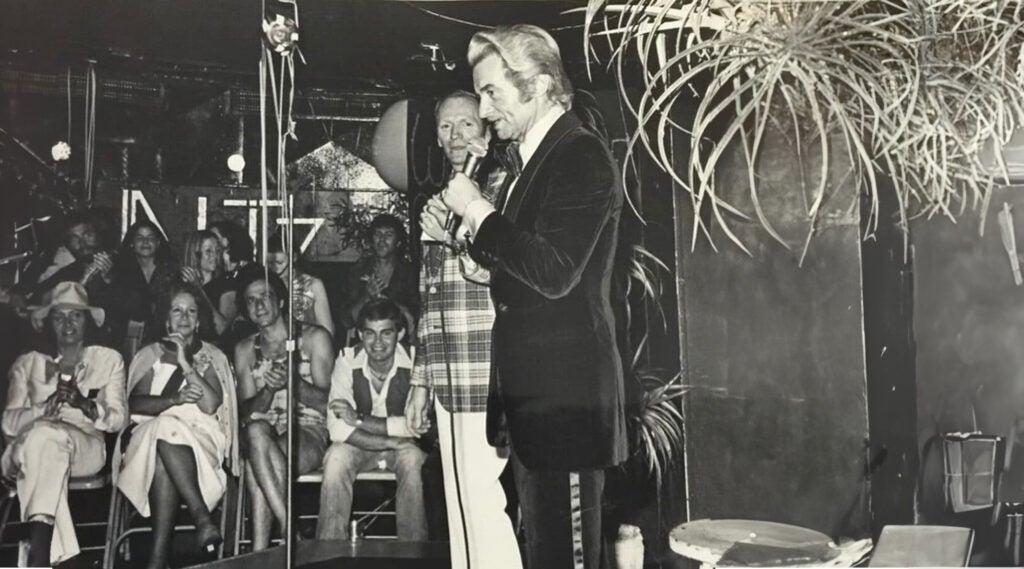
Steve Ostrow, with microphone, was the owner of the Continental Baths, seen here in the 1970s. (NYC LGBT Historic Sites Project)
Brooklyn-born Steve Ostrow was “an aspiring opera singer and the cantor in his local temple” in Matawan, New Jersey, when he decided to rent the basement of Manhattan’s Ansonia Hotel and turn it into a gay men’s bath house, sex club and disco. The Continental Baths, in business from 1968 to 1977, was a mecca for men seeking men when homosexuality had only recently been decriminalized, and a draw for celebrities who came for entertainers such as Bette Midler, whose poolside performances launched her career. He died on Feb. 3 at 91.
Richard Lewis
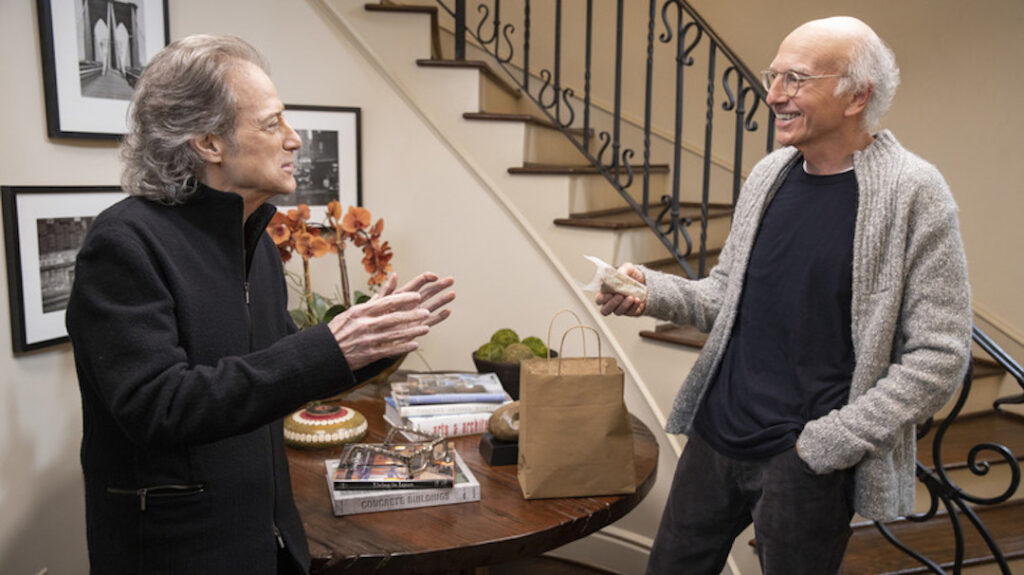
Richard Lewis and Larry David in an episode of “Curb Your Enthusiasm.” (HBO)
Comedian Richard Lewis parlayed his neurotic Jewish personality and self-deprecating humor into a 50-year career as a standup and actor. Most notably, he starred in the ABC sitcom, “Anything but Love,” and played a fictionalized version of himself in HBO’s “Curb Your Enthusiasm” from 2000 until 2024. Said Larry David, the show’s creator and a childhood friend, “He had that rare combination of being the funniest person and also the sweetest.” Born at Brooklyn Jewish Hospital, Lewis moved to Los Angeles decades ago but never really settled in. “Even in my home,” he told the New York Post, “I feel like I’m in a hotel, waiting to go back to New York.” He died on Feb. 27 at 76.
Iris Apfel
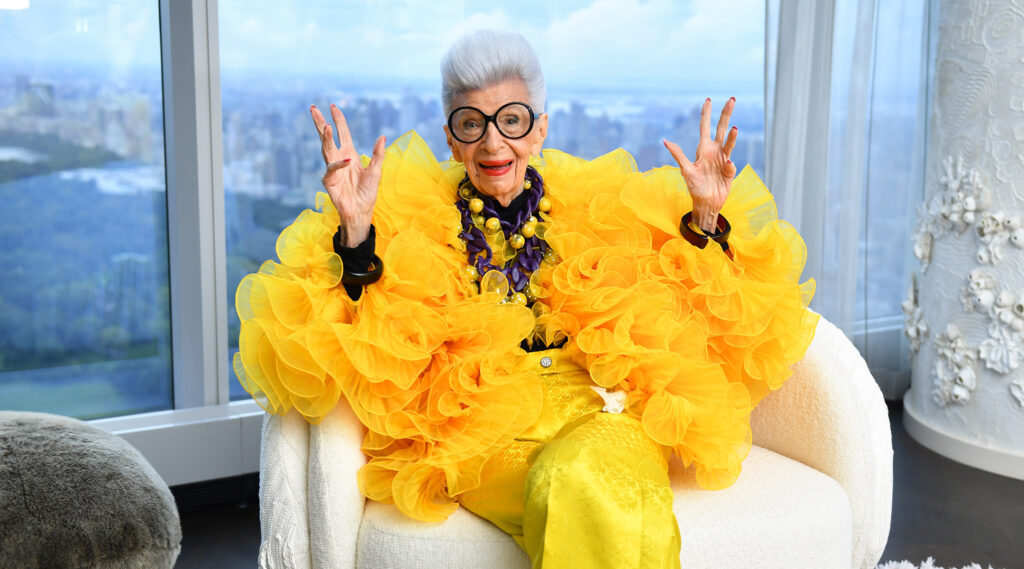
Iris Apfel sits for a portrait during her 100th Birthday Party at Central Park Tower, Sept. 9, 2021. (Noam Galai/Getty Images))
Senior style icon Iris Apfel was born in Queens to a Jewish family before embarking on a long career in textile design alongside her husband, Carl Apfel. She became famous as a fashionista in her 80s and 90s, thanks to her New York attitude, high-low style and signature oversized glasses. “That natural born fashion sense was possibly passed down from her Jewish mother, Sadye (Syd), who ran her own fashion boutique,” Kveller reported. Apfel became the first person to show her wardrobe at the Met and was the oldest model to be signed on by IMG models, at 97. She died on March 1 at 102.
Kathy Goldman
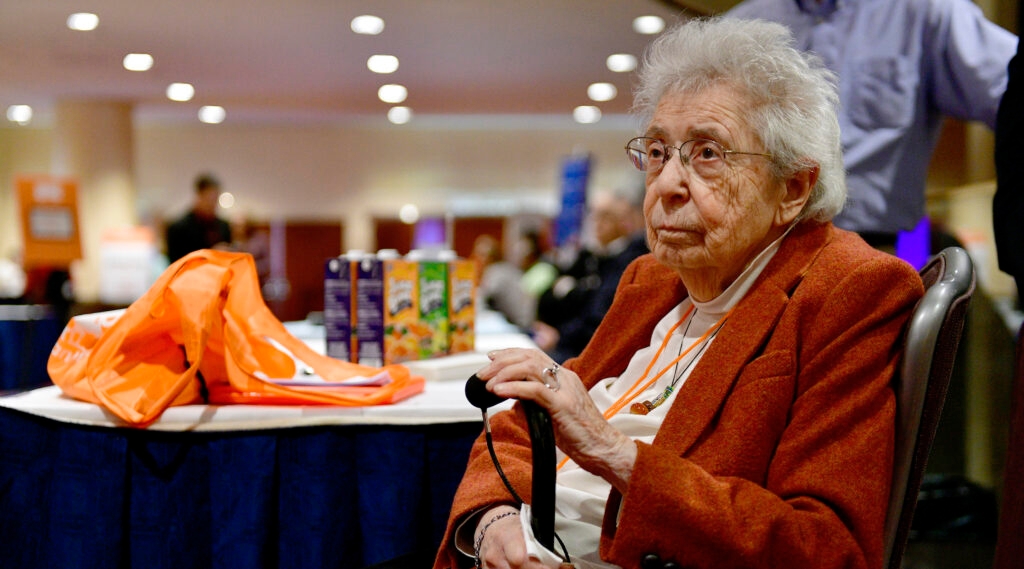
Kathy Goldman, founder of Food Bank for New York City, attends the organization’s 29th Annual Conference on Hunger and Poverty at Marriott Marquis Times Square, Feb. 13, 2020. (Eugene Gologursky/Getty Images for Food Bank for New York City)
A historian once called Kathy Goldman “twentieth-century New York’s most important food activist.” Born to Jewish immigrant parents in the Bronx, Goldman became one of only two white people to join United Bronx Parents, an effort to reform and change the Bronx public schools in the mid-1960s. In 1980 she founded the Community Food Resource Center —which provided food to hundreds of thousands of low-income New York City residents — and was its executive director for its 23 years of existence. She died on March 5 at 92.
Martin Greenfield
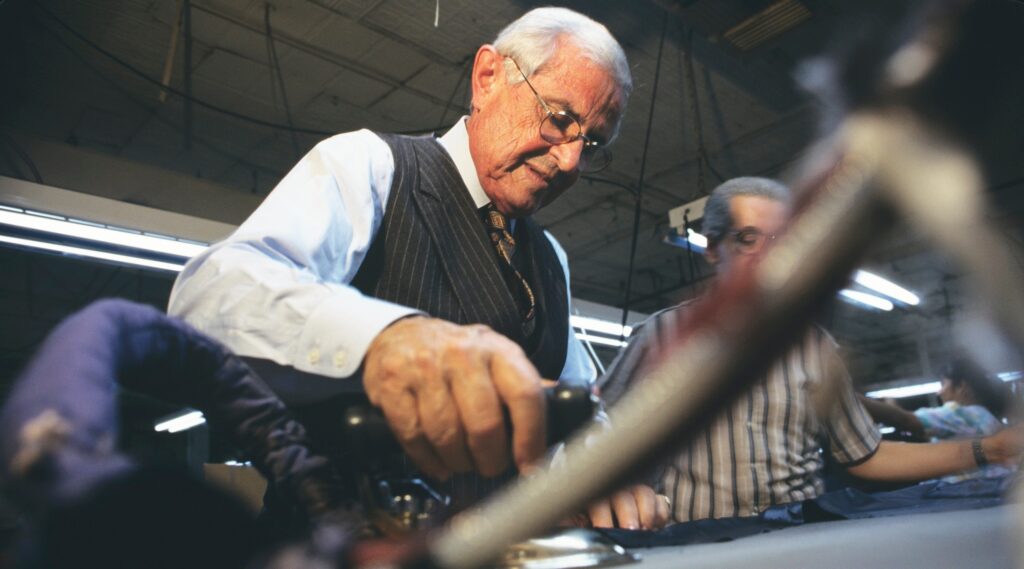
Martin Greenfield, tailor for Bill Clinton and Colin Powell, in his Brooklyn shop. (Photo by mark peterson/Corbis via Getty Images)
Martin Greenfield survived Auschwitz and Buchenwald, immigrated to the United States, and became a master tailor who dressed a series of presidents from Dwight Eisenhower to Barack Obama. Working out of a third-floor office in his East Williamsburg factory, Greenfield became one of the best-known — and some would say best — men’s tailor in the country. He died on March 20 at 95.
Paul Auster
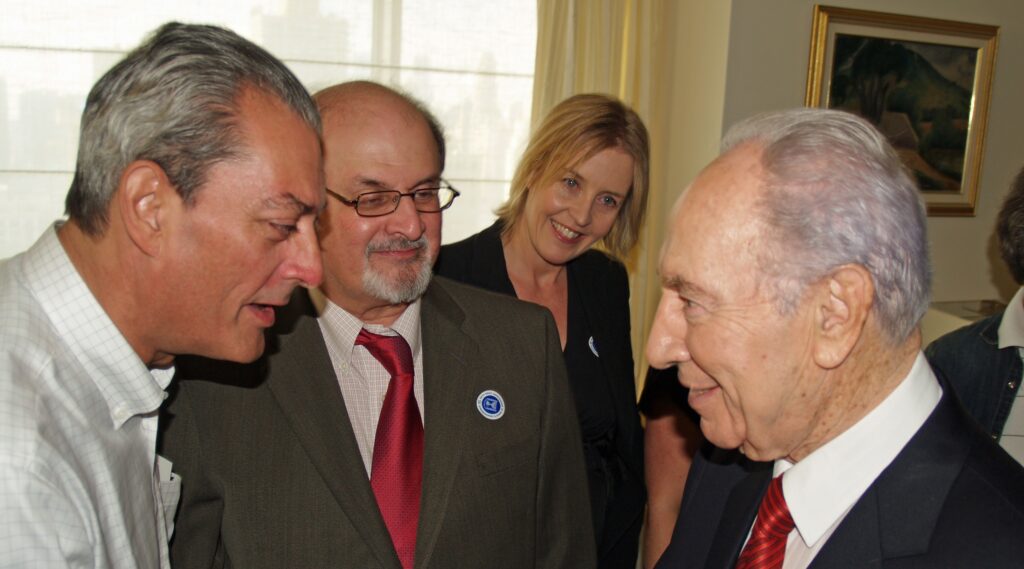
Paul Auster, left, fellow writer Salman Rushdie, center, and Shimon Peres chat at a breakfast honoring Israeli writer Amos Oz on the Upper East Side of Manhattan in New York City, Sept. 24, 2008. (David Shankbone/Wikipedia)
Jewish novelist Paul Auster was vaulted into the front ranks of American novelists by his “New York Trilogy.” Raised in the heavily Jewish suburbs of Newark, New Jersey (which he depicted in the 2017 autobiographical novel “4 3 2 1”), Auster looked east to New York and became one its most iconic chroniclers. In the trilogy of “City of Glass” (1985), “Ghosts” (1986) and “The Locked Room” (1986), he used the conventions of detective novels and film noir to explore what one interviewer called “the annihilation of identity in the urban world.” He died on April 30 at 77.
Rabbi Moshe Kotlarsky
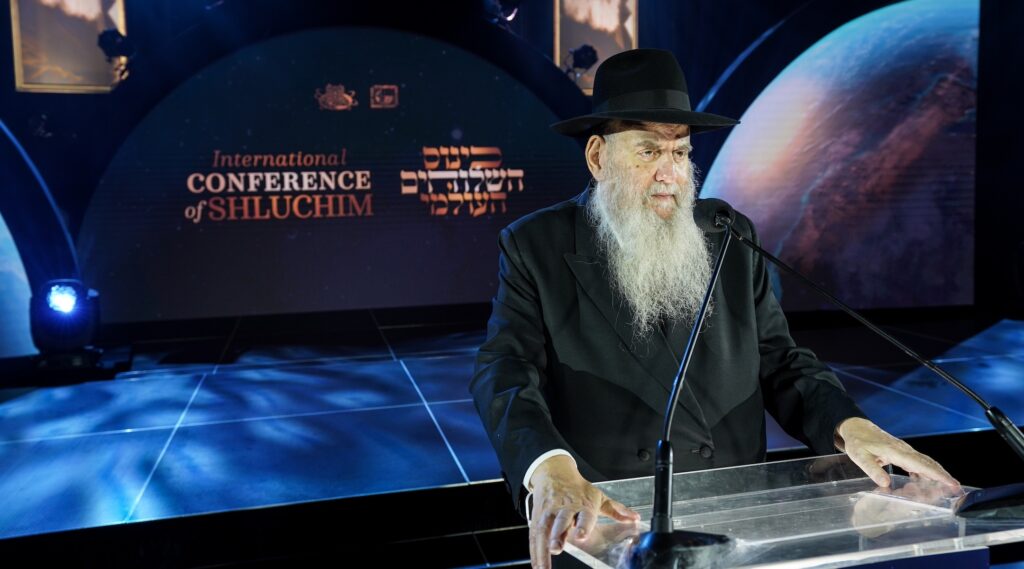
Rabbi Moshe Kotlarsky addresses attendees on Zoom during the International Conference of Chabad-Lubavitch Emissaries, in Brooklyn, New York, Nov. 15, 2020. (Bentzi Sasson/Chabad.org)
A leading figure in the Chabad-Lubavitch community, Rabbi Moshe Kotlarsky was known for his efforts to build the Hasidic movement’s global outreach efforts and for his personal ties with community members. As chairman of various Chabad affiliates, Kotlarsky played a key role in carrying out the vision of the movement’s late leader, Rabbi Menachem Mendel Schneerson, known as the Rebbe, in launching what are now more than 5,000 outreach centers in more than 100 countries. “He was caring for everybody and that’s why everybody feels so close,” said one rabbi who flew to Brooklyn from Amsterdam for his funeral. Kotlarsky died on June 4 at 74.
Ruth Westheimer
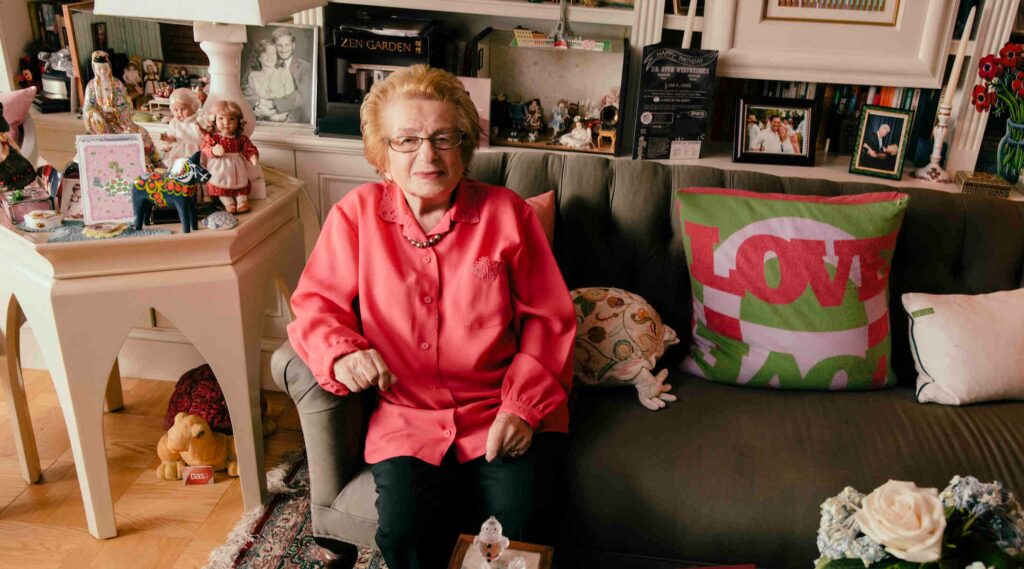
Dr. Ruth Westheimer, a Holocaust survivor who became America’s most famous sex therapist, was featured in the 2019 documentary “Ask Dr. Ruth.” (Austin Hargrave)
A Holocaust survivor and Israeli military veteran, the diminutive Ruth Westheimer charmed and educated millions of listeners as the taboo-breaking radio sex therapist “Dr. Ruth.” Her program, “Sexually Speaking,’” which launched in 1980 on the now defunct WYNY-FM, broke broadcasting taboos about sex and helped make her the most famous sex therapist in the world — albeit one with a motherly demeanor and thick German accent. She was a firm believer in sex as healthy dialogue among consenting partners, and also emphasized psychology over biology. “When it comes to sex, the most important six inches are the ones between the ears,” the longtime Washington Heights resident famously said. She died on July 12 at 96.
Hettie Jones
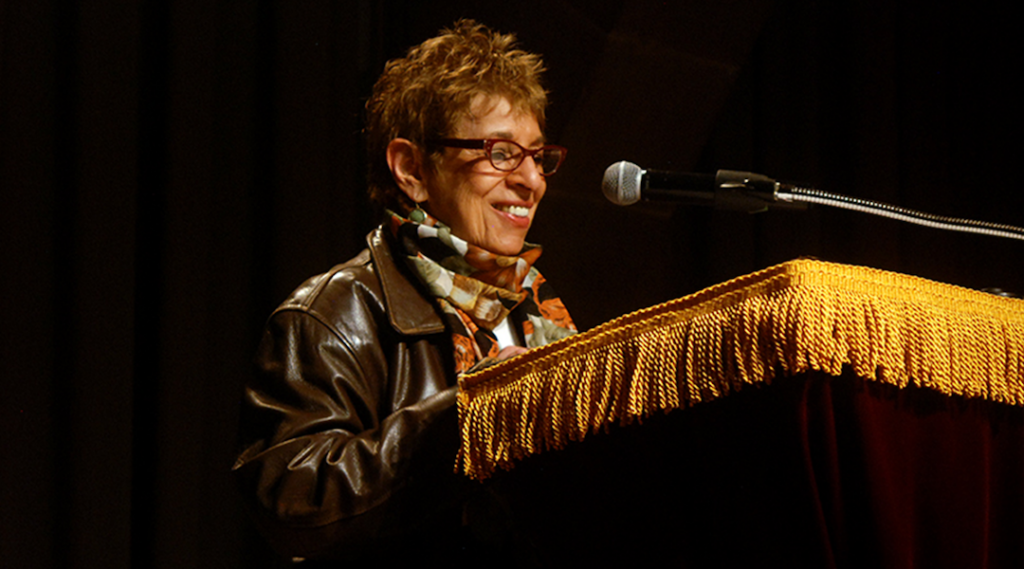
Hettie Jones reads at Cooper Union’s Great Hall in New York City, June 11, 2019. (Wikimedia)
After growing up in a middle-class Jewish family in Laurelton, Queens, and attending college in Virginia, Hettie Jones plunged into the Greenwich Village bohemia of jazz, Beat poetry and leftist politics and met and married an up-and-coming Black poet and playwright named LeRoi Jones. In 1964 Jones would divorce her, but Hettie Jones soldiered on, raising their children, writing more than 20 books — including an acclaimed memoir, “How I Became Hettie Jones” — teaching poetry and mentoring other writers. She died on Aug. 13 at 90.
Mark Podwal
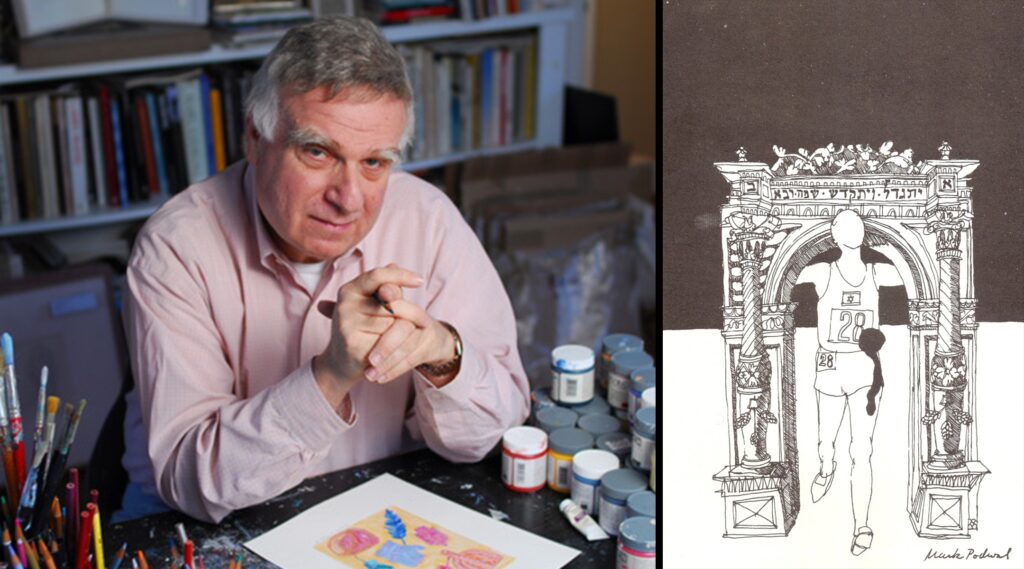
The artist Mark Podwal in his studio in 2007; at right, his illustration “Munich Massacre,” drawn in memory of Israeli athletes killed by Black September terrorists during Summer Olympics in Munich, was published in the New York Times in 1972. (Wikipedia)
In Mark Podwal’s illustrations — created for children’s books, synagogue tapestries, gallery walls and often commissioned by the New York Times — he devised a Jewish visual vocabulary that made him one of the best known Jewish artists of his era. Podwal, who lived in New York, also became the only working dermatologist whose works on paper are included in the Metropolitan Museum of Art’s Modern and Contemporary Art Collection. He died on Sept. 13 at 79.
Yakov Shapiro
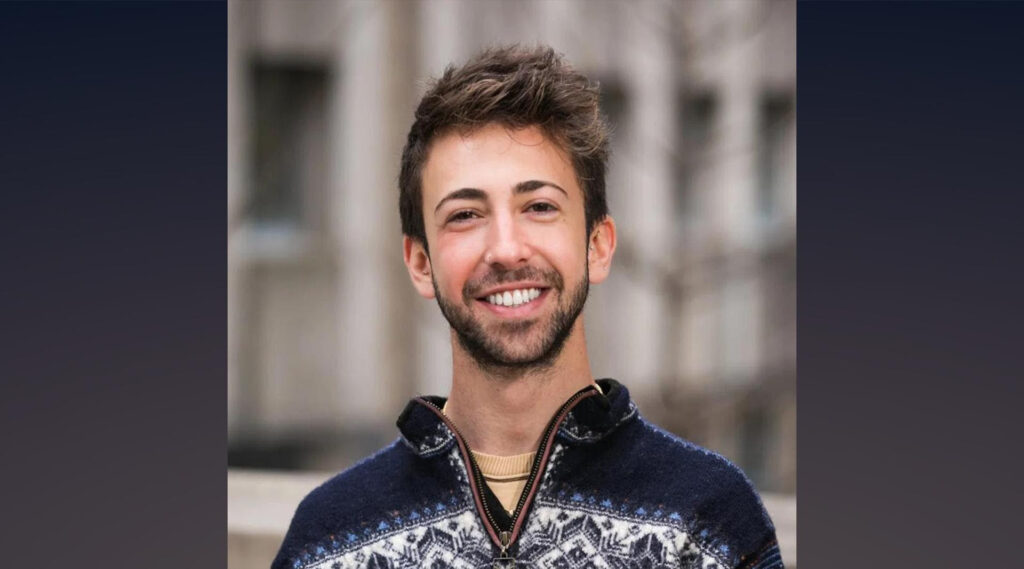
In the days immediately following the start of Russia’s war in Ukraine, Yakov Shapiro traveled with the Jewish Agency to the Polish border to support refugees arriving from Ukraine. (Courtesy Columbia/Barnard Hillel)
Yakov Shapiro was born in Rishon Lezion, Israel, to a family that had emigrated from Belarus. After his military service, he staffed a Jewish Agency camp for children in Ukraine, traveling to Ukraine and running programs for young Jews in underserved areas. From 2021 to 2024, Shapiro served as a Jewish Agency Campus Israel Fellow at Columbia/Barnard Hillel. There, he met with Jewish students, chatted with Russian-speaking Jews and worked the room at Shabbat dinners. After his term, he stayed in the city to teach Hebrew at The Abraham Joshua Heschel School. Hillel staff announced his death on Sept. 30, at age 30.
Support the New York Jewish Week
Our nonprofit newsroom depends on readers like you. Make a donation now to support independent Jewish journalism in New York.
Lynda Obst
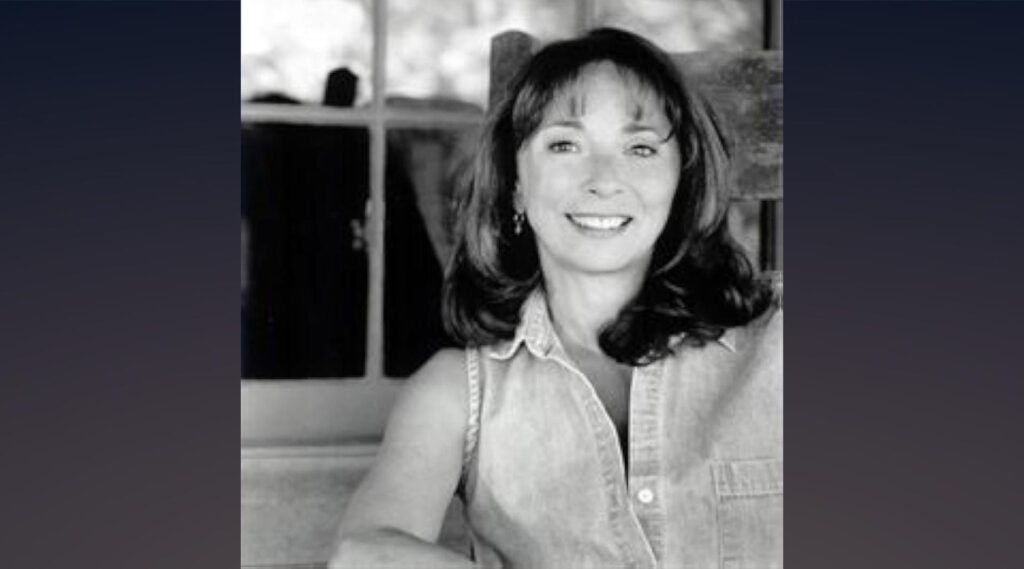
Lynda Obst was the executive producer for her friend Nora Ephron’s romantic comedy “Sleepless in Seattle.” (Via IMDB)
Lynda Obst, a film producer whose credits include “Interstellar,” “How to Lose a Guy in 10 Days,” “Contact” and “One Fine Day,” was an editor at The New York Times magazine before heading to Hollywood in the late 1970s. Born in Manhattan and raised in Harrison, New York, Obst produced her friend Nora Ephron’s directorial debut, “This Is My Life” (1992), and was the executive producer for Ephron’s wildly successful romantic comedy “Sleepless in Seattle” in 1993. She died on Oct. 22 at 74.
Felice Gaer
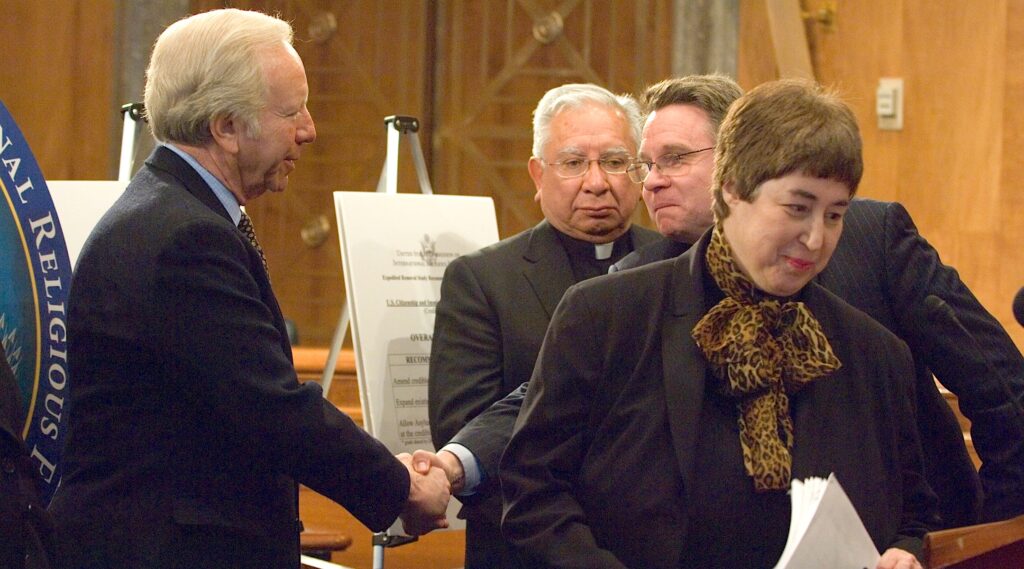
Felice Gaer, at right, then chair of the U.S. Commission on International Religious Freedom, took part in a news conference presenting its report card on the two-year-old “Report on Asylum Seekers in Expedited Removal,” Feb. 7, 2007. (Douglas Graham/Roll Call/Getty Images)
For over 30 years, Felice Gaer Baran directed the American Jewish Committee’s Jacob Blaustein Institute for the Advancement of Human Rights, assuring Jews a seat at the table in global debates around torture, political repression, LGBT rights and antisemitism. As head of the only human rights division within a major Jewish organization, Gaer (who used her maiden name professionally) witnessed gratifying success in advocating for women’s rights, torture victims and the protection of political dissidents around the world. She died on Nov. 9 at 78.
Miriam Reinharth
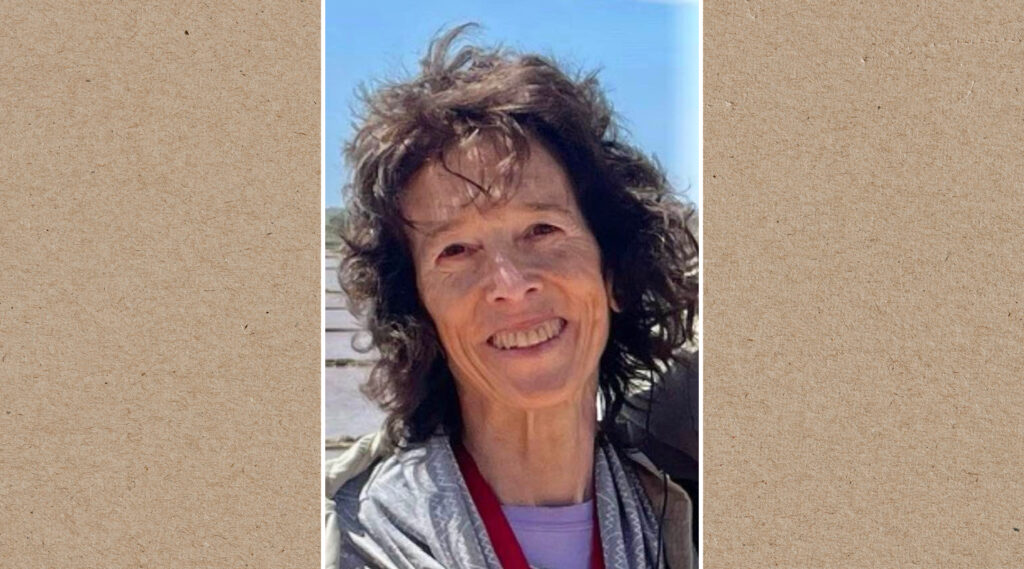
Miriam Reinharth organized community forums and literary events for the New York Jewish Week from 2007-2012. (Courtesy Steven Greenhouse via Facebook)
As a New York Jewish Week staffer from 2007 to 2012, Miriam Reinharth organized community forums and literary events. A communications professional, Reinharth worked since 2016 as public engagement manager at the Community Service Society of New York, where she helped hundreds of ordinary New Yorkers navigate issues around insurance and medical debt. Her work was abruptly cut short when she was struck by an ambulance on the Upper West Side this fall. She died from her injuries on Nov. 12 at 69.
Pat Koch Thaler
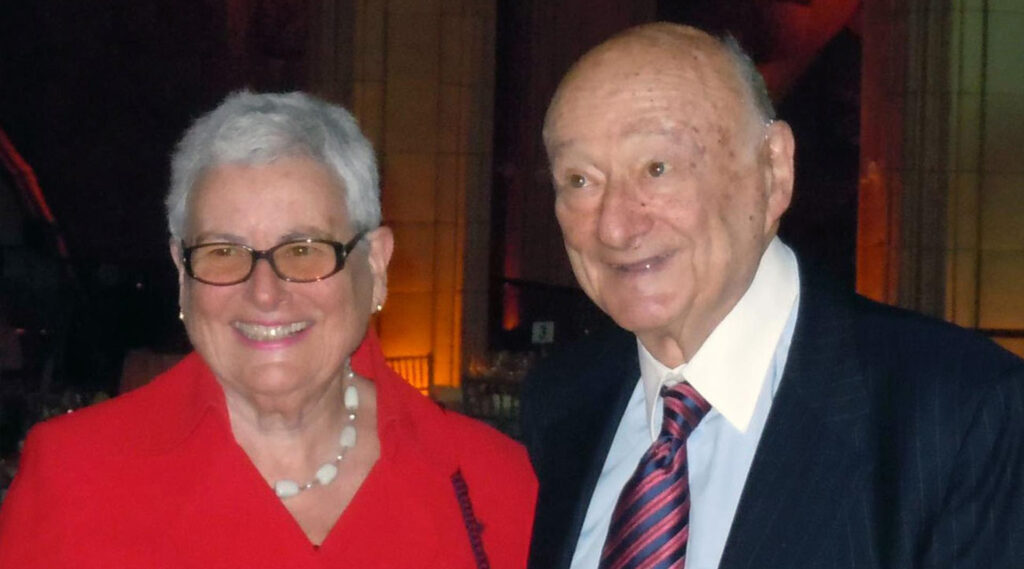
Pat Koch Thaler and her brother, former NYC Mayor Ed Koch, attended a gala for The American Friends of Beit Morasha in Manhattan, Jan. 25, 2012. (Courtesy American Friends of Beit Morasha)
A former dean at New York University and the younger sister of late New York City Mayor Ed Koch, Pat Koch Thaler lived a long and eventful life. But it was how her life ended that made front-page news: Suffering from cancer, she called New York Times obituary writer Sam Roberts and explained that she would be taking her own life the following Saturday, via a legal, self-administered lethal prescription. Thaler was born in Newark, New Jersey, later moving to Brooklyn, and entered a career in education that led to her becoming the dean of arts, sciences and humanities at NYU’s School of Continuing Education. She died on Nov. 16 at 92.
Marshall Brickman
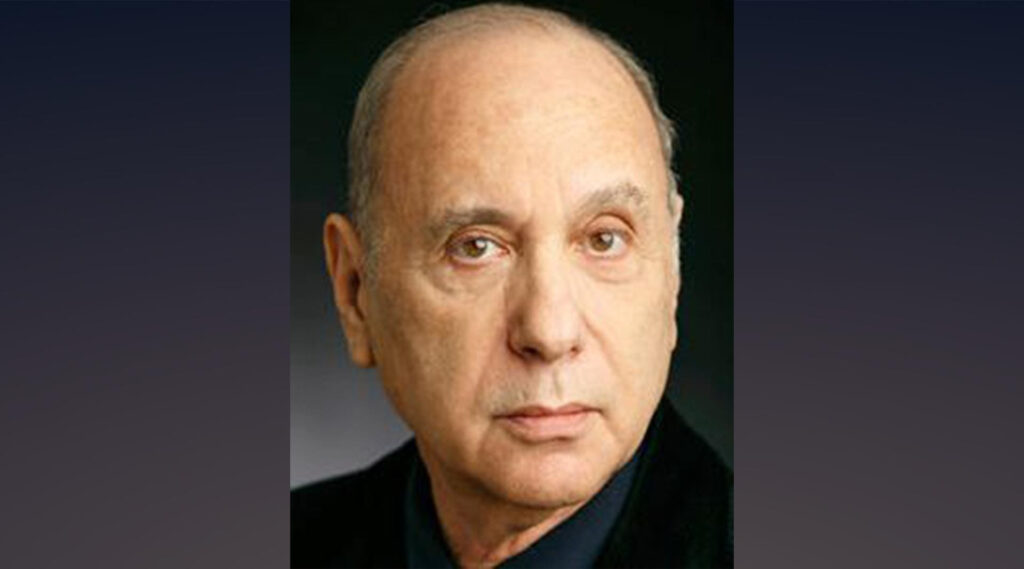
Marshall Brickman grew up Jewish in Brooklyn and showed a talent for humor at an early age. (Wikipedia)
A Greenwich Village-based folk musician turned screenwriter, Marshall Brickman teamed up with Woody Allen to co-write three of his most celebrated films: “Sleeper,” “Manhattan” and “Annie Hall,” which won the Oscar for Best Picture in 1977. He also wrote a treatment for what became “The Muppet Show” and co-wrote the book for the hit Broadway musical “Jersey Boys.” The son of what he described as “left-wing, middle-class Jewish” parents, Brickman grew up in a musical home in the Flatbush neighborhood of Brooklyn. Brickman died on Nov. 29 at 85.
Arlene Agus
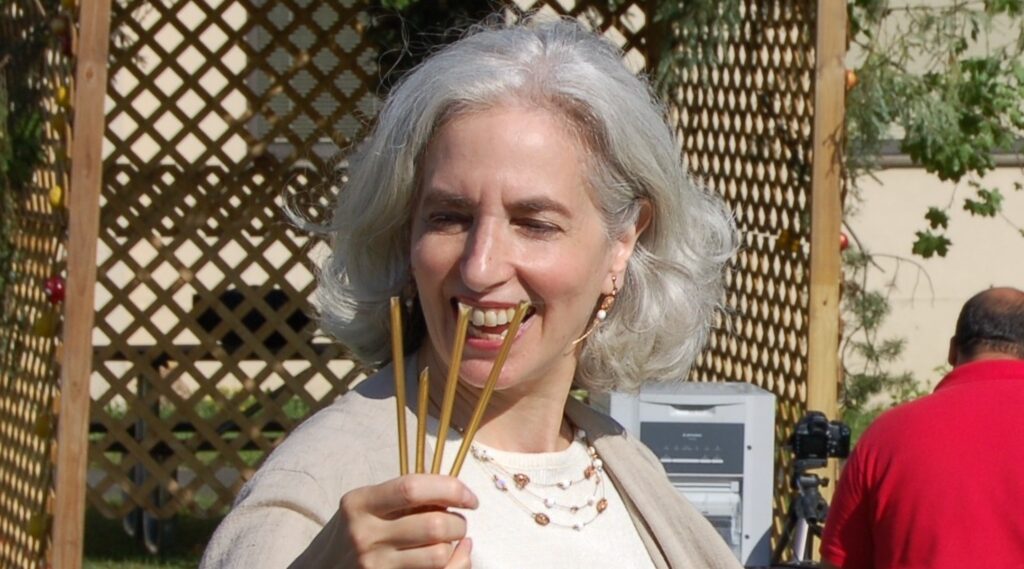
Arlene Agus, pictured here in 2010, was a pioneer of Orthodox feminism and a leader in the Upper West Side’s Jewish community. (Flickr)
Arlene Agus’ voice was familiar to many Jews on the Upper West Side, where she led prayers at egalitarian services and taught others how to chant from the Torah. An early advocate of Orthodox feminism and prominent advocate for Soviet Jewry, Agus was a founding member of Minyan M’at, an egalitarian service that meets at the Conservative Ansche Chesed synagogue. She is considered the primary force behind the contemporary adoption of Rosh Chodesh, the festival of the new moon, as a women’s ritual. Her body was found on Dec. 24; she died at 75.
Linda Lavin
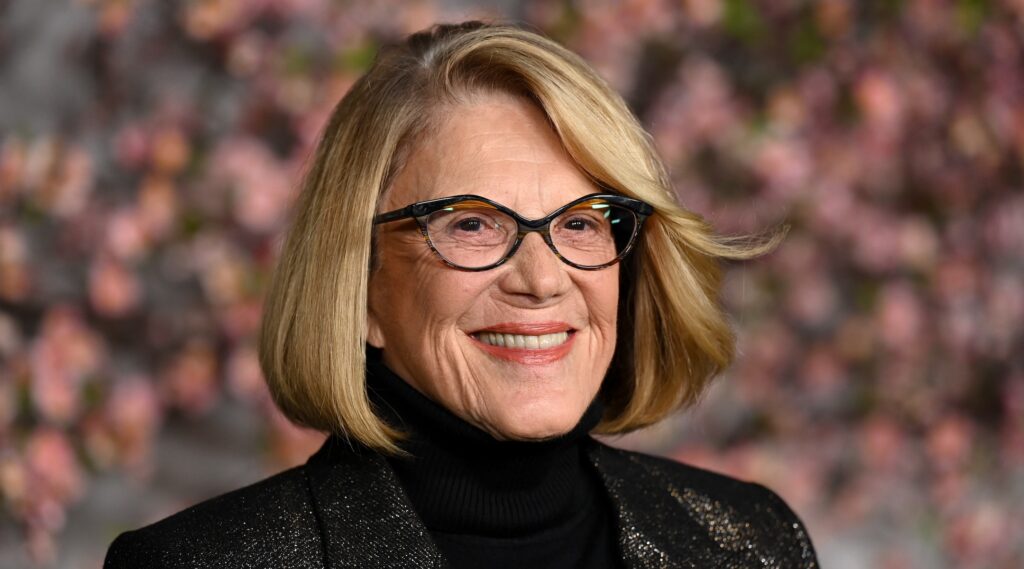
Linda Lavin at the “No Good Deed” Los Angeles Premiere at Tudum Theater on December 4, 2024 in Los Angeles, California. (Gilbert Flores/Variety via Getty Images)
Once called “the ‘Mother’ of All Jewish Mothers,” Tony Award-winning Broadway actor Linda Lavin was perhaps best known for her role as the title character in the sitcom “Alice.” Born in Portland, Maine, to a family in which all four grandparents were Jewish immigrants from Russia, Lavin majored in theater at the College of William & Mary before working a theater job in Boston. Lavin moved to New York City and, in 1960, made her Off Broadway debut. She went on to earn six Tony nominations between 1970 and 2012, winning the honor as best leading actress in a Play for Neil Simon’s “Broadway Bound” in 1987. She died on Dec. 29 at 87.
Jewish stories matter, and so does your support.

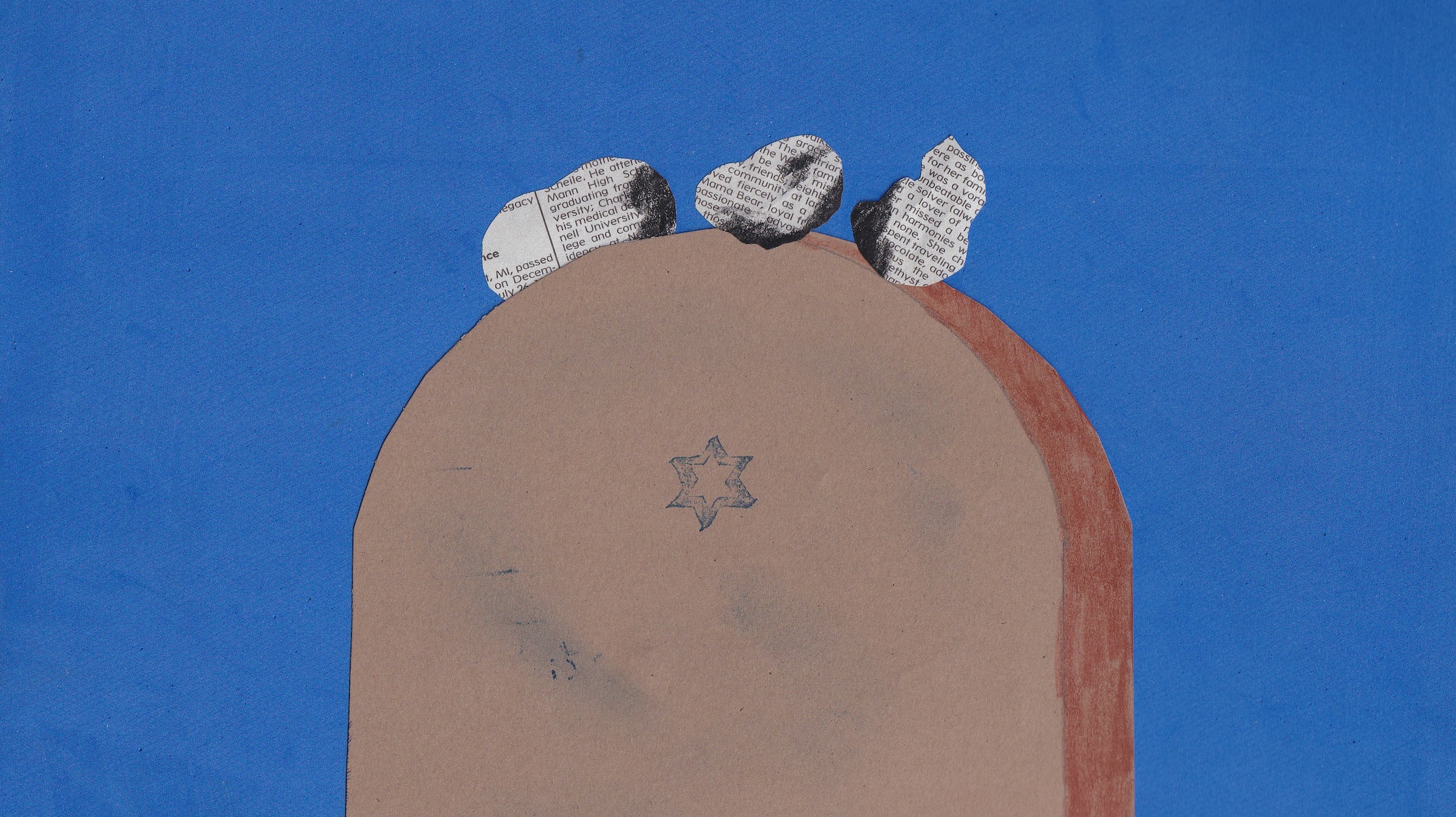







 English (US) ·
English (US) ·